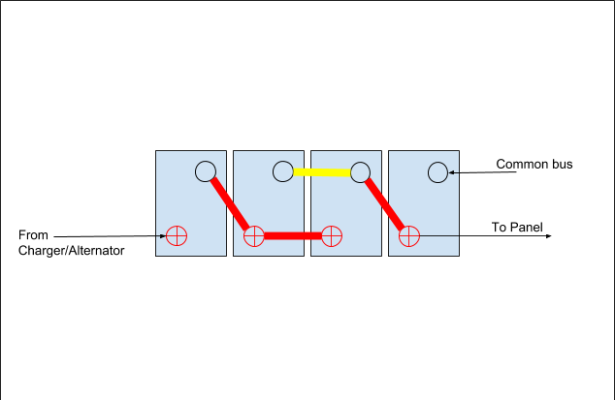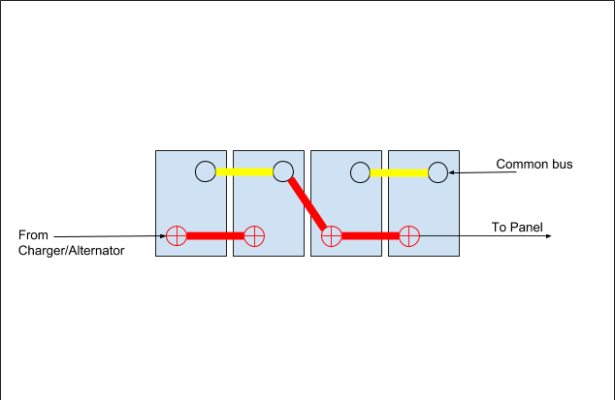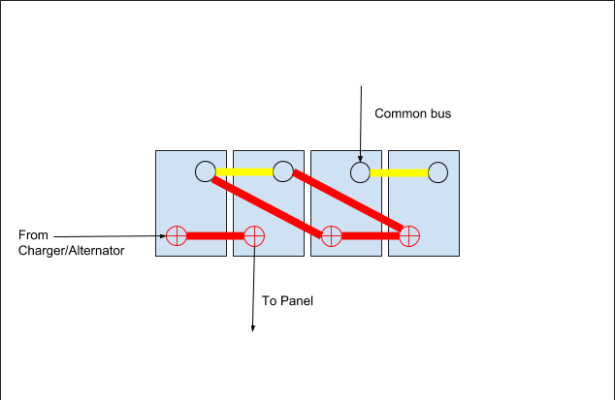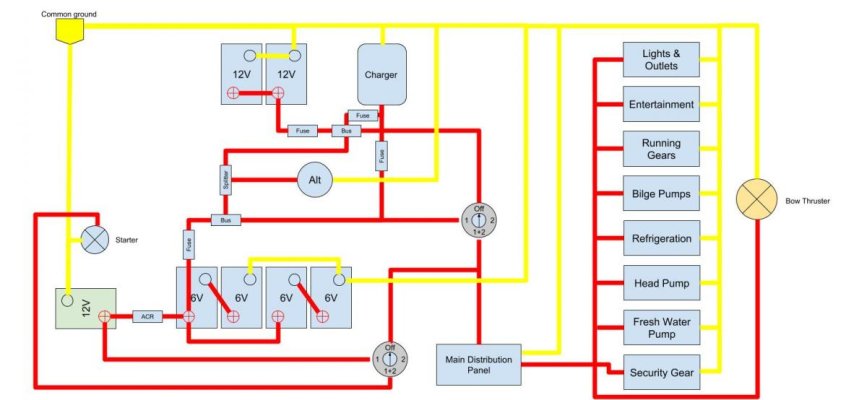Lou_tribal
Guru
ANL and Class T yes, CBs not for high currents.
Blue Sea's a great source
Well the breaker from Blue Sea are made up to 200 Amps or do I miss something?
L
ANL and Class T yes, CBs not for high currents.
Blue Sea's a great source
Check with your local marine store, all ours stores around here have them and allow you to borrow them.......
Get to know the Circuit Wizard app from Blue Sea.
Ask Qs here while learning.
Double distance for round trip.
Some applications 3% voltage drop is too much!
Never have I heard ," gee I wish I used thinner wire".



Correct me if I am wrong, but #1 won’t work at all. And I am having trouble wrapping my head around #3. So #2 would be my reco.
One and two will send 6v to the panel. Three will work but I second comdave’s drawing.




Two batteries in series and both pair in parallel so this should give a 12v bank of 2x the Ah of each battery. However my question stands about imbalance in charge/discharge.View attachment 78132OK, how about this.
This shouldn't have an inbalance as the positive and negative are drawn from separate 12v banks.Two batteries in series and both pair in parallel so this should give a 12v bank of 2x the Ah of each battery. However my question stands about imbalance in charge/discharge.
I tend to agree about Comodave schema, in fact it was what I was planning to do before over thinking the whole as usually
But I am interested to learn more about the subject.
L

Why not combine all three 12v batteries to be a bigger start banks that doubles as a secondary backup bank?
The 3 12V are not of the same type. The two at the top are group 31 deep cycle (my current house bank), the green at the bottom is my start battery (group 64 if I remember correctly).
L

As you mentioned I just don't want to trash these batteries,not for the price but just not to trash something for nothing as simplistic as it can seem.I don't understand this stuff terribly well, but on first blush it seems OK as long as your two house banks are of similar battery types.
OTOH, you can often find decent 6v wet cell GC batteries for under $100 each. With the core refund on the 12v, you may be able to go with a house bank of 8 6v batteries that will give you a LOT more capacity and simplify your setup.
I certainly understand not wanting to trash perfectly good 12v batteries but give it some thought.
Don't worry and please criticize!I am not criticizing your drawing. I am assuming you have simplified it. The parts that worry me are the splitter and the bow thruster. I would need to know exactly what you are calling a splitter. Bow thrusters use a lot of amps and must be wired appropriately but I am sure you already know that.
That is why I made these as 2 separate banks (separate charge, separate discharge).All the batts in a bank should ideally be identical including mfg date.
Don't plan to add newer to old later on.
